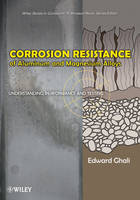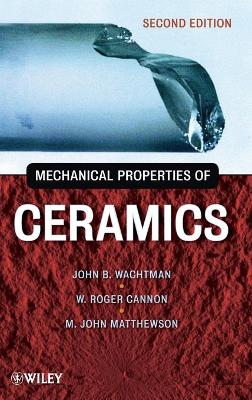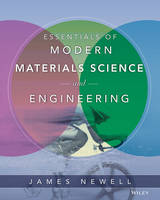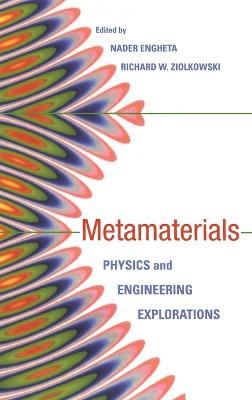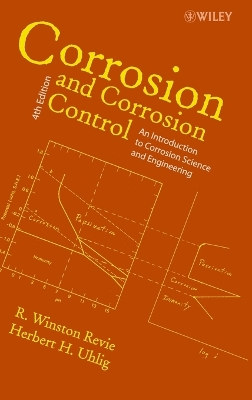Metamaterials with Negative Parameters
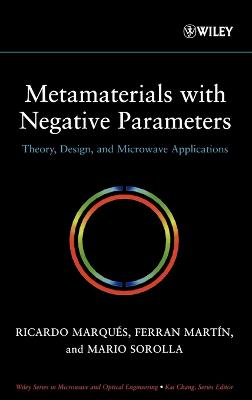 -15%
portes grátis
-15%
portes grátis
Metamaterials with Negative Parameters
Theory, Design, and Microwave Applications
Sorolla, Mario; Martin, Ferran; Marques, Ricardo
John Wiley & Sons Inc
02/2008
336
Dura
Inglês
9780471745822
15 a 20 dias
666
Preface.
1. The electrodynamics of left-handed media.
1.1. Wave propagation in left-handed media.
1.2. Energy density and group velocity.
1.3. Negative refraction.
1.4. Fermat principle.
1.5. Other effects in left-handed media.
1.5.1. Inverse Doppler effect.
1.5.2. Backward Cerenkov radiation.
1.5.3. Negative Goos-Haenchen shift.
1.6. Waves at interfaces..
1.6.1. Transmission and reflection coefficients.
1.6.2. Surface waves.
1.7. Waves through left-handed slabs..
1.7.1. Transmission and reflection coefficients.
1.7.2. Guided waves.
1.7.3. Backward leaky and complex waves.
1.8. Slabs with ?/?o-1 and ?/?o-1.
1.8.1. Phase compensation and amplification of evanescent modes.
1.8.2. Perfect tunneling.
1.8.3. The perfect lens.
1.8.4. The perfect-lens as a tunneling/matching device.
1.9. Losses and dispersion.
1.10. Indefinite media.
1.11. Problems.
References.
2. Synthesis of bulk metamaterials.
2.1. Scaling plasmas at microwave frequencies.
2.1.1. Metallic waveguides and plates as one- and two-dimensional plasmas.
2.1.2. Wire media.
2.1.3. Spatial dispersion in wire media.
2.2. Synthesis of negative magnetic permeability.
2.2.1. Analysis of the edge-coupled SRR.
2.2.2. Other SRR designs.
The broadside-coupled SRR.
The non-bianisotropic SRR.
The double split SRR.
Spirals.
2.2.3. Constitutive relationships for bulk SRR metamaterials.
2.2.4. Higher order resonances in SRRs.
2.2.5. Isotropic SRRs.
2.2.6. Scaling down SRRs to infrared and optical frequencies.
2.3. SRR-based left-handed metamaterials..
2.3.1. One-dimensional SRR-based left-handed metamaterials.
2.3.2. Two-dimensional and three-dimensional SRR-based lefthanded metamaterials.
2.3.3. On the application of the continuous medium approach to discrete SRR-based left-handed metamaterials.
2.3.4. The ?superposition? hypothesis..
2.3.5. On the numerical accuracy of the developed model for SRR-based metamaterials.
2.4. Other approaches to bulk metamaterial design.
2.4.1. Ferrite metamaterials.
2.4.2. Chiral metamaterials.
2.4.3. Other proposals.
2.5. Appendix.
2.6. Problems.
References.
3. Synthesis of metamaterials in planar technology.
3.1. The dual (backward) transmission line concept.
3.2. Practical implementation of backward transmission lines.
3.3. Two-dimensional (2D) planar metamaterials.
3.4. Design of left handed transmission lines by means of SRRs: the resonant type approach.
3.4.1. Effective negative permeability transmission lines.
3.4.2. Left handed transmission lines in microstrip and CPW technologies.
3.4.3. Size reduction.
3.5. Equivalent circuit models for SRRs coupled to conventional transmission lines.
3.5.1. Dispersion diagrams.
3.5.2. Implications of the model.
3.6. Duality and complementary split rings resonators (CSRRs).
3.6.1. Electromagnetic properties of CSRRs.
3.6.2. Numerical calculation and experimental validation.
3.7. Synthesis of metamaterial transmission lines by using CSRRs.
3.7.1. Negative permittivity and left handed transmission lines.
3.7.2. Equivalent circuit models for CSRR loaded transmission lines.
3.7.3. Parameter extraction.
3.7.4. Effects of cell geometry on frequency response.
3.8. Comparison between the circuit models of resonant type and dual left handed lines.
Problems.
References.
4. Microwave applications of metamaterial concepts.
4.1. Filters and diplexers.
4.1.1. Stop band filters.
4.1.2. Planar filters with improved stop band.
4.1.3. Narrow band pass filter and diplexer design.
4.1.3.1. Band pass filters based on alternate right/left handed (ARLH) sections implemented by means of SRRs.
4.1.3.2. Band pass filters and diplexers based on alternate right/left handed (ARLH) sections implemented by means of CSRRs.
4.1.4. CSRR-based band pass filters with controllable characteristics.
4.1.4.1. Band pass filters based on the hybrid approach: design methodology and illustrative examples.
4.1.4.2. Other CSRR-based filters implemented by means of right handed sections.
4.1.5. High pass filters and ultra wide band pass filters (UWBPFs) implemented by means of resonant type balanced CRLH metamaterial transmission lines.
4.1.6. Tunable filters based on varactor-loaded split rings resonators (VLSRRs).
4.1.6.1. Topology of the VLSRR and equivalent circuit model.
4.1.6.2. Validation of the model.
4.1.6.3. Some illustrative results: tunable notch filters and stop band filters.
4.2. Synthesis of metamaterial transmission lines with controllable characteristics and applications.
4.2.1. Miniaturization of microwave components.
4.2.2. Compact broadband devices.
4.2.3. Dual band components.
4.2.4. Coupled line couplers.
4.3. Antenna applications.
Problems.
References.
5. Advanced and related topics.
5.1. SRR and CSRR based admittance surfaces.
5.1.1. Babinet principle for a single split rings resonator.
5.1.2. Surface admittance approach for SRR planar arrays.
5.1.3. Babinet principle for CSRR planar arrays.
5.1.4. Behavior at normal incidence.
5.1.5. Behavior at general incidence.
5.2. Magneto- and electro-inductive waves.
5.2.1. The magneto-inductive wave equation.
5.2.2. Magneto-inductive surfaces.
5.2.3. Electro-inductive waves in CSRR arrays.
5.2.4. Applications of magneto- and electro-inductive waves.
5.3. Sub-diffraction imaging devices.
5.3.1. Some universal features of sub-diffraction imaging devices.
5.3.2. Imaging in the quasi-electrostatic limit. Role of surface plasmons.
5.3.3. Imaging in the quasi-magnetostatic limit. Role of magnetostatic surface waves.
5.3.4. Imaging by resonant impedance surfaces. Magneto-inductive lenses.
5.3.5. Canalization devices.
5.4. Problems.
References.
Preface.
1. The electrodynamics of left-handed media.
1.1. Wave propagation in left-handed media.
1.2. Energy density and group velocity.
1.3. Negative refraction.
1.4. Fermat principle.
1.5. Other effects in left-handed media.
1.5.1. Inverse Doppler effect.
1.5.2. Backward Cerenkov radiation.
1.5.3. Negative Goos-Haenchen shift.
1.6. Waves at interfaces..
1.6.1. Transmission and reflection coefficients.
1.6.2. Surface waves.
1.7. Waves through left-handed slabs..
1.7.1. Transmission and reflection coefficients.
1.7.2. Guided waves.
1.7.3. Backward leaky and complex waves.
1.8. Slabs with ?/?o-1 and ?/?o-1.
1.8.1. Phase compensation and amplification of evanescent modes.
1.8.2. Perfect tunneling.
1.8.3. The perfect lens.
1.8.4. The perfect-lens as a tunneling/matching device.
1.9. Losses and dispersion.
1.10. Indefinite media.
1.11. Problems.
References.
2. Synthesis of bulk metamaterials.
2.1. Scaling plasmas at microwave frequencies.
2.1.1. Metallic waveguides and plates as one- and two-dimensional plasmas.
2.1.2. Wire media.
2.1.3. Spatial dispersion in wire media.
2.2. Synthesis of negative magnetic permeability.
2.2.1. Analysis of the edge-coupled SRR.
2.2.2. Other SRR designs.
The broadside-coupled SRR.
The non-bianisotropic SRR.
The double split SRR.
Spirals.
2.2.3. Constitutive relationships for bulk SRR metamaterials.
2.2.4. Higher order resonances in SRRs.
2.2.5. Isotropic SRRs.
2.2.6. Scaling down SRRs to infrared and optical frequencies.
2.3. SRR-based left-handed metamaterials..
2.3.1. One-dimensional SRR-based left-handed metamaterials.
2.3.2. Two-dimensional and three-dimensional SRR-based lefthanded metamaterials.
2.3.3. On the application of the continuous medium approach to discrete SRR-based left-handed metamaterials.
2.3.4. The ?superposition? hypothesis..
2.3.5. On the numerical accuracy of the developed model for SRR-based metamaterials.
2.4. Other approaches to bulk metamaterial design.
2.4.1. Ferrite metamaterials.
2.4.2. Chiral metamaterials.
2.4.3. Other proposals.
2.5. Appendix.
2.6. Problems.
References.
3. Synthesis of metamaterials in planar technology.
3.1. The dual (backward) transmission line concept.
3.2. Practical implementation of backward transmission lines.
3.3. Two-dimensional (2D) planar metamaterials.
3.4. Design of left handed transmission lines by means of SRRs: the resonant type approach.
3.4.1. Effective negative permeability transmission lines.
3.4.2. Left handed transmission lines in microstrip and CPW technologies.
3.4.3. Size reduction.
3.5. Equivalent circuit models for SRRs coupled to conventional transmission lines.
3.5.1. Dispersion diagrams.
3.5.2. Implications of the model.
3.6. Duality and complementary split rings resonators (CSRRs).
3.6.1. Electromagnetic properties of CSRRs.
3.6.2. Numerical calculation and experimental validation.
3.7. Synthesis of metamaterial transmission lines by using CSRRs.
3.7.1. Negative permittivity and left handed transmission lines.
3.7.2. Equivalent circuit models for CSRR loaded transmission lines.
3.7.3. Parameter extraction.
3.7.4. Effects of cell geometry on frequency response.
3.8. Comparison between the circuit models of resonant type and dual left handed lines.
Problems.
References.
4. Microwave applications of metamaterial concepts.
4.1. Filters and diplexers.
4.1.1. Stop band filters.
4.1.2. Planar filters with improved stop band.
4.1.3. Narrow band pass filter and diplexer design.
4.1.3.1. Band pass filters based on alternate right/left handed (ARLH) sections implemented by means of SRRs.
4.1.3.2. Band pass filters and diplexers based on alternate right/left handed (ARLH) sections implemented by means of CSRRs.
4.1.4. CSRR-based band pass filters with controllable characteristics.
4.1.4.1. Band pass filters based on the hybrid approach: design methodology and illustrative examples.
4.1.4.2. Other CSRR-based filters implemented by means of right handed sections.
4.1.5. High pass filters and ultra wide band pass filters (UWBPFs) implemented by means of resonant type balanced CRLH metamaterial transmission lines.
4.1.6. Tunable filters based on varactor-loaded split rings resonators (VLSRRs).
4.1.6.1. Topology of the VLSRR and equivalent circuit model.
4.1.6.2. Validation of the model.
4.1.6.3. Some illustrative results: tunable notch filters and stop band filters.
4.2. Synthesis of metamaterial transmission lines with controllable characteristics and applications.
4.2.1. Miniaturization of microwave components.
4.2.2. Compact broadband devices.
4.2.3. Dual band components.
4.2.4. Coupled line couplers.
4.3. Antenna applications.
Problems.
References.
5. Advanced and related topics.
5.1. SRR and CSRR based admittance surfaces.
5.1.1. Babinet principle for a single split rings resonator.
5.1.2. Surface admittance approach for SRR planar arrays.
5.1.3. Babinet principle for CSRR planar arrays.
5.1.4. Behavior at normal incidence.
5.1.5. Behavior at general incidence.
5.2. Magneto- and electro-inductive waves.
5.2.1. The magneto-inductive wave equation.
5.2.2. Magneto-inductive surfaces.
5.2.3. Electro-inductive waves in CSRR arrays.
5.2.4. Applications of magneto- and electro-inductive waves.
5.3. Sub-diffraction imaging devices.
5.3.1. Some universal features of sub-diffraction imaging devices.
5.3.2. Imaging in the quasi-electrostatic limit. Role of surface plasmons.
5.3.3. Imaging in the quasi-magnetostatic limit. Role of magnetostatic surface waves.
5.3.4. Imaging by resonant impedance surfaces. Magneto-inductive lenses.
5.3.5. Canalization devices.
5.4. Problems.
References.






